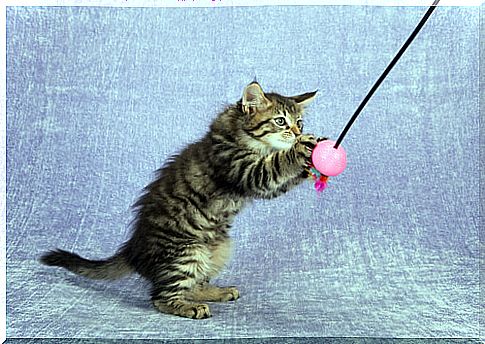How To Groom A Cat At Home?

The cat is a curious, intelligent and indispensable animal: its elegance and magnetism exert an attraction for us and now, finally, we have one at home. The first days of living together will be an adventure for both. So, we present here a guide for you to train your feline at home and be able to create a link strong and healthy with it.
A happy cat, a cat that listens
The key to a good relationship between a pet and its owner is through mutual understanding. In the case of cats, we have to take into account that their way of communicating varies a lot, depending on their mood and the circumstances they are going through.
A dog will never have any problem telling us what he wants and how he wants it. A cat can be stressed or nervous without its owner being aware of it. The following is a list of behaviors to pay attention to:

- The fact of hiding or rejecting contact: every self-respecting cat has its own space where it takes refuge from the continuous caresses of the human being, but there are also medical problems that can make your cat not feel well and need stay alone. Consult your veterinarian if you suspect this to be the case.
- Repetitive scratches scattered throughout the house. The presence of new furniture can alter their perception of the territory, which they often demarcate with pheromones. If you have recently renovated the house or if there are a large number of cats in the area, it is possible that your pet is stressed or anxious.
In addition, you need to take into account the signs of happiness or relaxation: the tail raised and in a wavy movement, the fact that it brushes against you and the desire to play indicate that our cat is healthy and happy.
Training: tactics and advice
As you might expect, we can never go against an animal’s wishes and do something that goes against its instincts or is unnatural. What we can do as responsible pet owners is to channel energy and enhance our pet’s abilities. And it is with the right stimulus that we will be able to get the right reaction.
The goal is to get the cat to associate certain behavior with an order or action of its owner. What techniques can we have in mind to get to this point in our relationship with our pet?
- First, we must start with positive reinforcements. One award or gift will be the ideal stimulus for the cat. Once the desired behavior becomes instinctual, we will no longer need the reward. We must withdraw it gradually and replace it with praise and caresses. We must take into account that the cat will naturally tend to repeat the action that has positive consequences.
- Be consistent. This is essential. An animal will never learn to behave in the desired way if we constantly change order. We should try to use the same phrase or stimulus. Once he can associate the desired behavior with that stimulus, we won’t have to repeat it again.
- Start training as soon as possible. The ideal is to start educating our pet as a puppy, as it will acquire knowledge more quickly and they will become more ingrained in it. Getting him used to the presence of humans around him is essential.
- Negative reinforcements. Cats can pose a problem for our furniture, plants and food. We must never physically attack them, as we seek to educate them. Generally speaking, they will respond to sharp rises in voice pitch (such as when we say “NO!” or “OUT!”). If it doesn’t work, we can use a water spray to dissuade our cat .

Training with clicker : what is it?
The clicker training method does not use negative reinforcements. It is based on the use of a small plastic device that “clicks” when pressed. This sound is something strange to the cat and its surroundings. Thanks to its specificity, it will be able to clearly associate it with a given order.
It should be noted that the clicker training process requires patience and gradual goals. First, we must familiarize our pet with the sound, and then give him some prize or reward that makes him realize he deserves your attention.
Here are some tips for this device to be effective:
- The “click” must be produced when it presents the desired behavior, not later.
- The “click” should only be produced once per behavior. Several “clicks” can confuse the cat.
- Start with small actions that the cat is already able to do on its own, such as sitting down or responding to the owner’s call.









